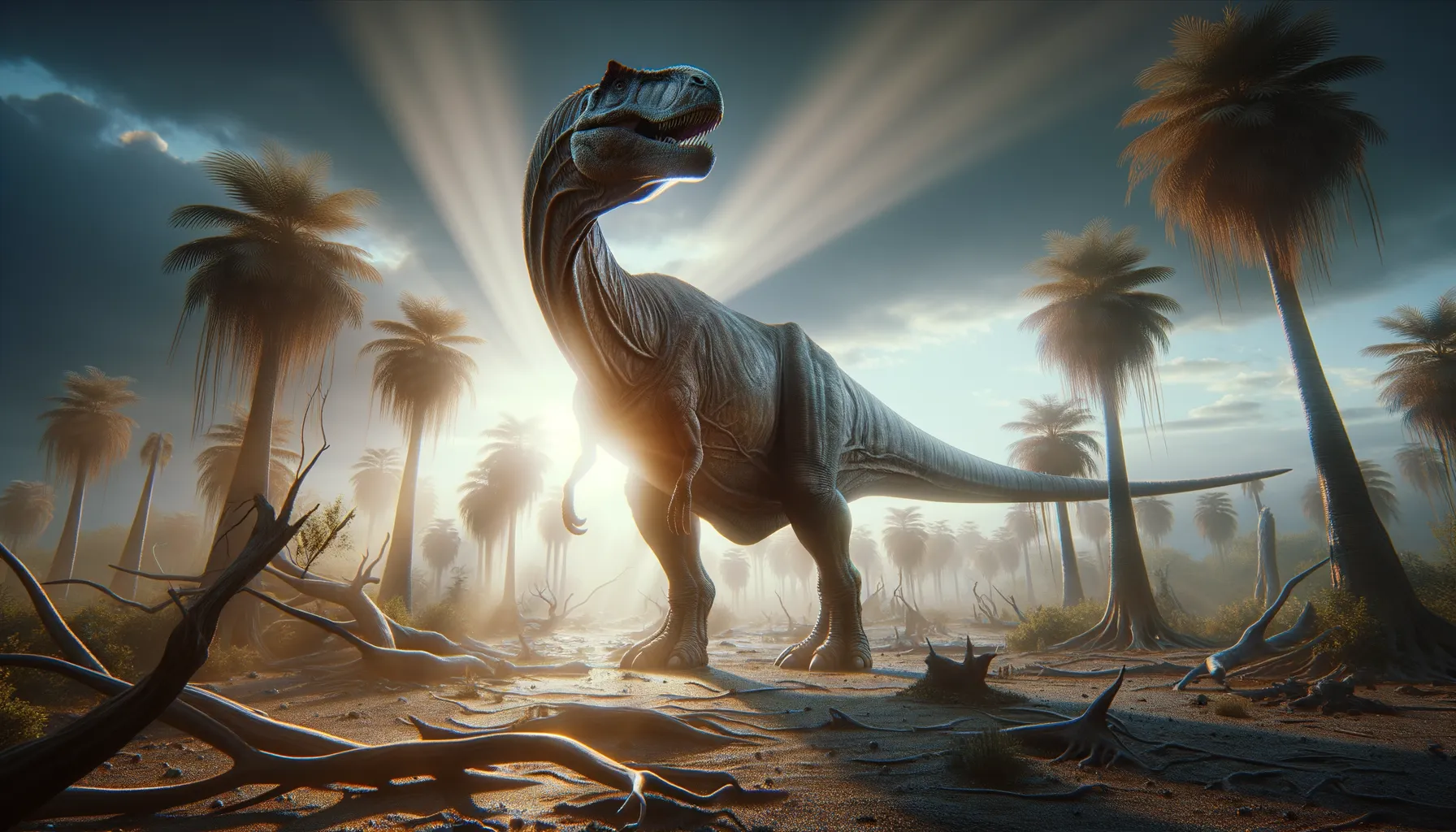
Cetiosaurus
The behemoth of the Jurassic Age
Period
Jurassic
Length
Could grow up to 16 to 18 meters long.
Height
Could reach up to 4 meters at the shoulders.
Weight
Estimated to weigh around 10 to 20 tons.
Cetiosaurus was one of the first dinosaurs to be described scientifically and belongs to the group known as sauropods. It had a massive body with long neck and tail but walked on four sturdy legs, much like an elephant today. This dinosaur was quite primitive compared to later sauropods, though it still had the characteristic long neck and tail that are iconic in this group.
Diet
Cetiosaurus was a herbivore, feeding primarily on plants. Its long neck allowed it to reach higher vegetation and areas less accessible to other contemporaneous dinosaurs. It likely devoured large amounts of foliage daily to sustain its massive size.
Hunting
Being a herbivore, Cetiosaurus did not engage in hunting. Instead, it foraged for plant material, utilizing its long neck to access a variety of trees and tall plants. Its digestion system was adapted to process large quantities of fibrous plant matter.
Environmental challenges
Cetiosaurus faced a range of environmental challenges, including predation threats from large carnivorous dinosaurs. Climate changes could also impact plant availability, affecting its food sources. During droughts or natural events like wildfires, it may have needed to migrate to find sufficient food and water supplies.
Speed
Slow-moving, lumbering pace.
Lifespan
Could live several decades like modern large reptiles.
First discovery
Discovered in England in the mid-19th century.
Fun Facts
- Cetiosaurus was one of the first known long-necked dinosaurs, belonging to a group called sauropods.
- The name 'Cetiosaurus' means 'whale lizard,' because when it was first discovered, people thought it lived in water like a whale.
- Living around 180 million years ago during the Jurassic period, Cetiosaurus roamed what is now Europe.
- Cetiosaurus was a herbivore, meaning it ate plants, and likely used its long neck to reach high vegetation.
- This dinosaur was quite large, growing up to 50 feet long, almost the length of a school bus!
- Unlike some of its later sauropod relatives, Cetiosaurus had a more robust build, with a strong body and sturdy limbs.
- Cetiosaurus bones were first discovered in England in the mid-1800s, making it one of the earliest recognized dinosaurs.
Growth and Development
Cetiosaurus, like other sauropods, hatched from eggs and experienced rapid growth rates to reach maturity. This growth through juvenile stages meant a substantial increase in size, which likely offered some protection from predators as adults. Once reaching maturity, their rate of growth would have slowed down significantly.
Habitat
Cetiosaurus lived in environments that were rich in vegetation, including floodplains and dense forests. These environments provided ample food resources for this massive herbivore. Fossils suggest its habitats were semi-aquatic, including regions with rivers and swampy areas, offering both food and safety.
Interaction with other species
Cetiosaurus likely coexisted with various other herbivorous and carnivorous dinosaurs. Its large size provided a measure of safety against predators, but it might have shared its habitat with other sauropods and herbivores competing for resources. Its role in the ecosystem would have been significant, perhaps influencing vegetation patterns.
Natural lifespan
In natural conditions, Cetiosaurus could live for several decades.
Reproduction
Cetiosaurus reproduced by laying eggs, likely in a communal nesting site where many individuals would lay to maximize offspring survival. The eggs could have been buried for protection from predators and environmental factors. Hatchlings would have needed to quickly become self-sufficient to survive in a landscape full of predators.
Social behaviour
Cetiosaurus may have exhibited some social behavior, such as moving in herds for protection against predators. Herd behavior could also help in locating resources like food and water. However, detailed social dynamics are harder to determine due to limited fossil evidence.
Fossil locations
Fossils of Cetiosaurus have been primarily found in the UK, providing insight into its Jurassic habitat. Other finds across Europe have expanded our understanding of its distribution. These sites offer a glimpse into the environment these dinosaurs thrived in millions of years ago.
